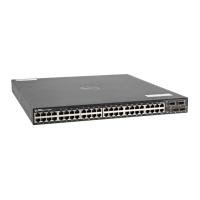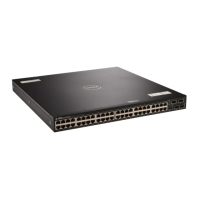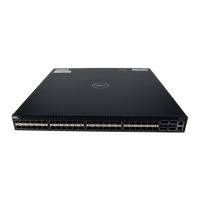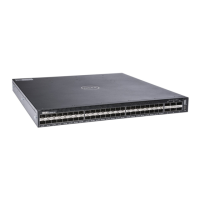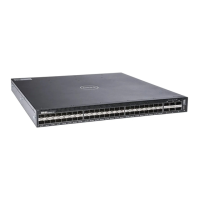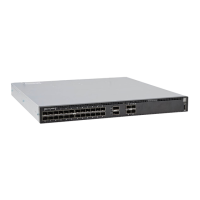• Assign the OSPFv3 process and an OSPFv3 area to this interface.
CONF-INT-type slot/port mode
ipv6 ospf process-id area area-id
– process-id: the process ID number assigned.
– area-id: the area ID for this interface.
Assigning OSPFv3 Process ID and Router ID Globally
To assign, disable, or reset OSPFv3 globally, use the following commands.
• Enable the OSPFv3 process globally and enter OSPFv3 mode.
CONFIGURATION mode
ipv6 router ospf {process ID}
The range is from 0 to 65535.
• Assign the router ID for this OSPFv3 process.
CONF-IPV6-ROUTER-OSPF mode
router-id {number}
– number: the IPv4 address.
The format is A.B.C.D.
NOTE: Enter the router-id for an OSPFv3 router as an IPv4 IP address.
• Disable OSPF.
CONFIGURATION mode
no ipv6 router ospf process-id
• Reset the OSPFv3 process.
EXEC Privilege mode
clear ipv6 ospf process
Assigning OSPFv3 Process ID and Router ID to a VRF
To assign, disable, or reset OSPFv3 on a non-default VRF, use the following commands.
• Enable the OSPFv3 process on a non-default VRF and enter OSPFv3 mode.
CONFIGURATION mode
ipv6 router ospf {process ID} vrf {vrf-name}
The process ID range is from 0 to 65535.
• Assign the router ID for this OSPFv3 process.
CONF-IPV6-ROUTER-OSPF mode
router-id {number}
714
Open Shortest Path First (OSPFv2 and OSPFv3)
